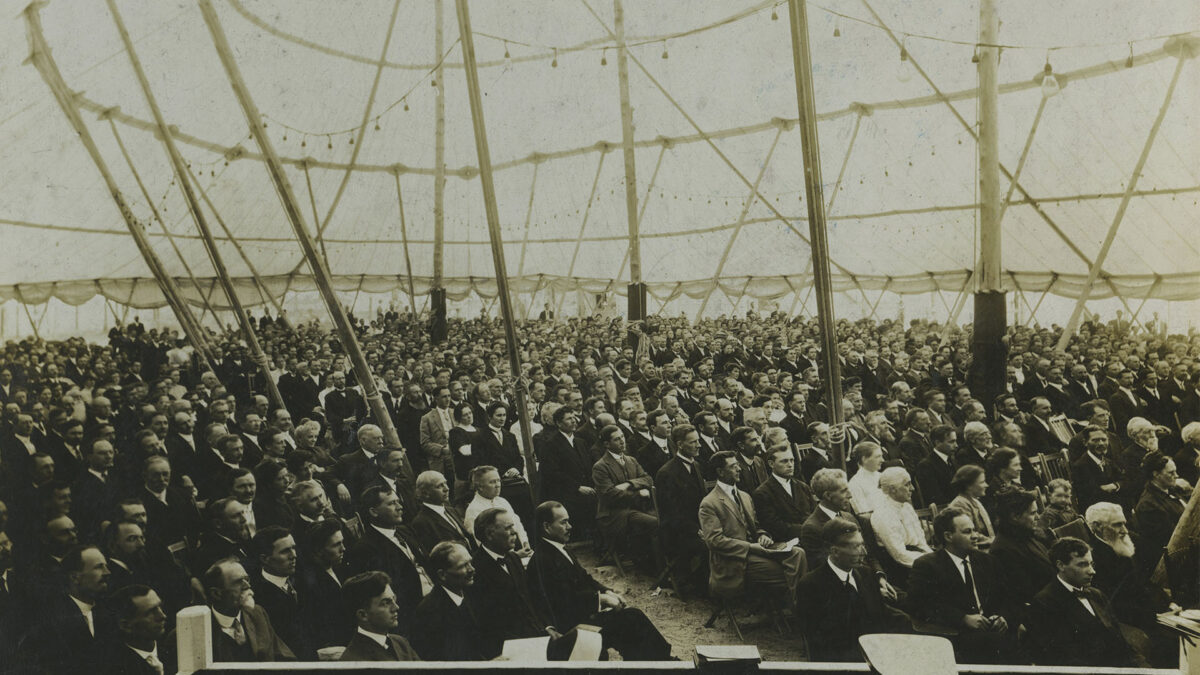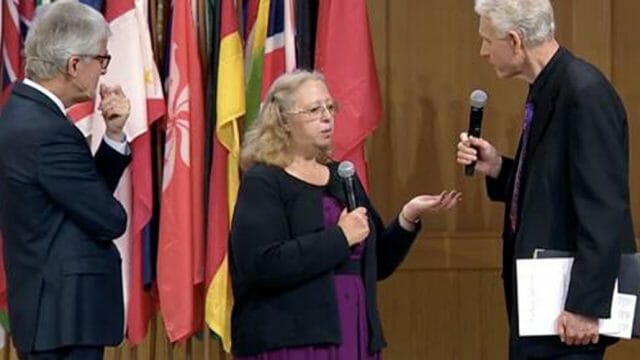Can we learn anything about General Conference sessions from the past?

Delegates to the thirty-eighth General Conference session in 1913 met in a tent in Takoma Park, Maryland, United States.* In the six days since the session began, they had listened to reports, speeches, and statistics. Delegates attended from the 48 U.S. states, as well as nearly every continent and several islands.
On May 21, 1913, delegates heard a proposal for a European Division Conference. It was the first time a division of the General Conference (GC) would be formed. A new division constitution was read, followed by a proposed change of the GC constitution. As soon as it was proposed, a motion was made to defer action so delegates could study the document. That day, seven lengthy reports of work around the world were read. Nearing the end of the day, delegates were tired. It was time to adjourn.
J. N. Loughborough, 81, had other ideas. He expressed his desire to speak.
“I want to tell you about the birth of a little child. . . . This one was born 50 years ago this very day, May 21, 1863.” To what was he referring? The beginning of the General Conference itself. Fifty years earlier, to the day, 20 delegates voted the Seventh-day Adventist Church into existence.
Reading the revised GC constitution 50 years from the day it was read the first time, no doubt, stirred Loughborough’s nostalgia.
A. G. Daniells, GC president, admitted he knew of the anniversary. Some had discussed the idea of a “jubilee celebration.” But church leaders thought the best way to celebrate was to simply keep working.
“We have laid before the delegates these wonderfully encouraging reports from distant lands,” said Daniells, suggesting the reports might be celebration enough. But Daniells continued. “Now, if some of the brethren had not gotten a vote in here quickly this morning to defer action on the report on the organization of the European Division Conference, I would have made a motion to go right ahead, so that we might have organized the European Division Conference on the jubilee day of the General Conference history.” In other words, the action taken earlier that day to postpone the vote to the next day wasn’t what he had in mind. Voting the first division on this special day would be appropriate.
One by one delegates voiced their opinion. E. R. Palmer was first. He thoroughly commended Daniells, agreeing entirely. He made an enthusiastic motion—let’s vote!
W. A. Spicer spoke next. The intent was noble, but waiting would be wiser, he said. One after another argued either to vote for a division that day or that leaders were being swept away with emotion. An attempt was made to lessen the motion, but to no effect. Debate continued until Review editor F. M. Wilcox abruptly moved to adjourn. One protested, but the chair called for a vote. The meeting ended. The European Division Conference was voted, but not on May 21. Instead, it was on May 22—50 years and one day after the founding of the General Conference.
This is how General Conference sessions work. Wherever two or more are gathered, decisions get complicated. Add in different languages, cultures, and perspectives, and decisions become more challenging. They eventually found a solution in 1913, but it took compromise—the division was formed, but not on the date proposed.
The 2020 General Conference session will have a full agenda. The issues will be different from previous sessions, but one thing will not change—the prayerful appeal for the Holy Spirit; that God will guide the church as He did in the past, does today, and into our future.
*Read the full account of this meeting in the 1913 General Conference Bulletin, pp. 95-101.








